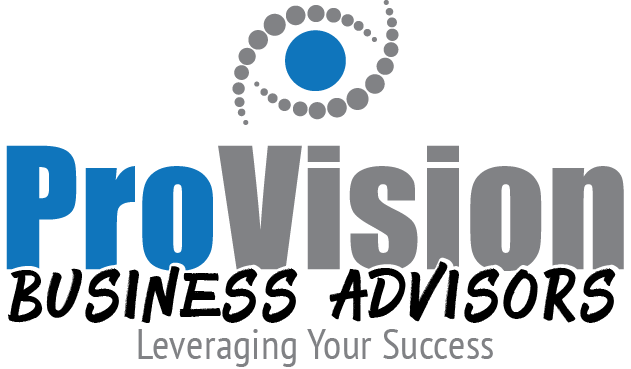 It’s hard to ignore the news reporting an economic downturn in Alberta with some economists even using the “R” word (Recession). Couple the general economic woes with an increasing cost structure (taxes, minimum wage, insurance, etc.) and it may feel as if you’re pushing that string up an insurmountable hill. Fear not, here’s a few tips to help you ferret out those profits that may be hiding in plain sight: in operating costs, customer service or purchasing processes, hiring practices or unproductive assets. This post wraps up the series on Strategies to Improve your Profitability Part 1 and Part 2.
It’s hard to ignore the news reporting an economic downturn in Alberta with some economists even using the “R” word (Recession). Couple the general economic woes with an increasing cost structure (taxes, minimum wage, insurance, etc.) and it may feel as if you’re pushing that string up an insurmountable hill. Fear not, here’s a few tips to help you ferret out those profits that may be hiding in plain sight: in operating costs, customer service or purchasing processes, hiring practices or unproductive assets. This post wraps up the series on Strategies to Improve your Profitability Part 1 and Part 2.
Operating Costs
There are many items that are included in “operating costs”: facility costs, general & administrative & selling expenses are often significant categories.
Some suggestion to release profits:
- Check into membership and association discounts
- Trim back on phone, internet, power, wages, general office expenses
- Ask employees to analyze expenses – assign a category to analyze. – Engage employees by offering rewards as incentives
- Reduce energy consumption – program thermostats, check lighting, turning off computers / machinery, buy green
- Customer Service
Look for ways to make customer service more efficient rather than by cutting services.
Ideas include:
- Streamline the customer contact centre Workforce management
- Automation
- Improve internet and systems training
- Set up or improve call-monitoring processes
- Experiment with home agents.
Purchasing
- Many business owners fall into habits with suppliers. Reviewing your standing orders with suppliers as well as looking for ways to shave off time or negotiate better prices or payment terms can yield significant savings over time, contributing to increased profits.
- Take charge of freight costs – join a consortium
- Address slow moving inventory – inventory levels, turns, systems and practices – reveal inefficiencies- optimize SKU counts
- Use your systems – do they provide under – over stock insight? Aged inventory by time slices?
- Improve vendor compliance program – handling supplier glitches / exceptions, accelerating inventory’s ready-for-sale times and movement through the receiving centre – improving overall product quality.
- Review receiving, merchandising, inventory control and accounting department to look at all aspects of compliance policies and procedures, make recommendations and implement improvements. Can terms be improved – do they offer any value added services at minimal or no extra cost?
- Seek out strategic industry partnerships and cross company standardization – cost share licenses for automations
- Re-negotiate supplier arrangements – increase payment times, reduce interest costs, negotiate better delivery terms / discounts / purchasing co-ops for small businesses.
- Review purchasing procedures – authorization limits, number of people authorized to purchase
- Review suppliers – consolidating purchases for additional buying power, reduce admin expenses – fewer purchase orders, invoices and payments
Labour
Labour has both fixed and variable cost components. Fixed cost of labour includes skeleton staff to keep doors open even if no sales.
Strategies:
- Schedule part time staff when you need them – customer volume vs. schedule
- Monitor labour costs with a system. Pull from payroll and sales reports to see the relationships. Customer counts are broken down by days, seasons, times and cross-referenced with labor hours, sales revenues and payroll costs. See the days / times that are not within your standards
- Increase productivity
- Reduce employee turnover
- Cross-train employees
- Review levels of compensation
- Trade time off for payroll expenses (flex time / compressed work week)
- Share jobs – part time
- Convert straight salary into commissions / fees
- Review benefits / perqs – change pension plans into profit sharing plans, increase deductibles
- Allow flexible work hours
- Purchase labour / scheduling- only schedule for work to be done, not “extra”
- Invest in training to improve productivity
- Control labor costs through better scheduling, not lower wages.
- Outsource – automate & outsource non-critical tasks
- Implement daily stand-up meeting
- Grow supervisors and managers
- Don’t hire “a pulse” – hold out for the right employee
- Use technology – remove manual processes; implement cloud computing, communicate over the internet
- Cut contingent labor
- Make permanent surgical layoffs
- Coach for productivity improvements
- Offer long term & short term leaves
- Identify voluntary buyouts
- Put more hours in yourself
Productivity Improvement
Productivity improvements are possible by using existing resources more effectively. Eliminating activities that are not impactful will quickly see improvements in productivity as the criteria for taking action is riveted to the impact on the P&L. Here’s a list to get you thinking:
- Improve management processes
- Improve tools
- Introduce job rotations
- Reduce turnover
- Restructure work
- Assess workloads
- Identify barriers to productivity
- Rewards productivity
- Improve managers to increase output at higher quality
- Make better layouts / efficiencies
- Use labour saving equipment
- Rework the “recipe” for COGS to reduce COGS as % of Sales
- Improve business processes – standardization and technology automation – reduce errors, improve communication, less rework
- Use LEAN process improvement – eliminate non-value adding activities – organizational house-keeping – eliminate unnecessary steps – speed up / save time
- Eliminate redundancies / review processes / breakdown silos, centralize processes
- Invest in technology – get more with fewer resources – fewer people?
- Consider customers online? Self serve? space? Outsource?
Whew… I trust you have a few ideas now of where to start reviewing your business practices to improve your profitability.
Increase Revenues
In addition to looking at your expenses, business owners must also look at opportunities to grow revenues. Revenues can come from price increases but can also be found by tapping into new markets, adding products / services to your offering, reducing the competition and growth.
Some considerations:
- Appropriately price your products / services
- Change your product / sales mix (i.e. if you are carrying items with 3 price points, drop the lowest price point)
- Increase sales space (physical or virtual)
- Add product lines to attract new customers / sell more to existing customers
- Buy out competitors
- Franchise your business
- Build credibility, value and trust in customers so you don’t compete on price.



